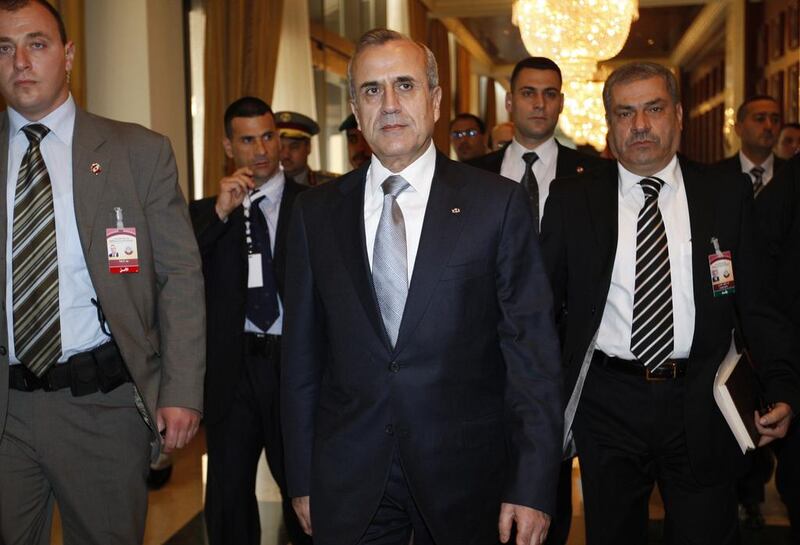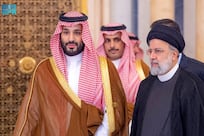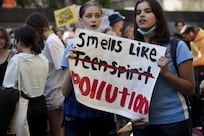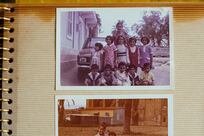Lebanon has been without a president for more than a year – and bickering factions are unwilling to make the compromises necessary to fill the country’s top post.
Since former president Michel Suleiman’s term ended last May, the Lebanese parliament, which is responsible for appointing the president, has met 24 times and failed to elect a new head of state.
The political system functions on deals struck between its many political parties and religious sects – and their foreign backers. But consensus has been elusive as the most powerful blocs lined up behind opposing sides in the civil war in neighbouring Syria.
Each faction accuses the other of serving external masters. Indeed, Lebanon is part of the continuing proxy war in the region – pitting Iran, which supports Hizbollah and its Christian allies, against Saudi Arabia and other Arab powers. While Iran and Saudi Arabia are still heavily involved in Lebanon, the two powers are more focused on their conflicts in places where, at the moment, the stakes are higher: Syria, Iraq and Yemen.
And while external players have a hand in the political paralysis, they do not deserve all the blame. For the most part, the Lebanese did this to themselves, and they need to find a political settlement of their own. Otherwise, the sectarian rift could explode, especially since it has been fuelled by bloodletting in Iraq and, more recently, Syria.
Today, Lebanon is limping along, as it has for much of the past decade since the assassination of former prime minister Rafik Hariri in February 2005. It’s not as badly off as Syria or Iraq, but there’s a perpetual state of paralysis. The political stalemate is scaring away international donors who are needed to help the government deal with the influx of more than a million Syrian refugees. Meanwhile, Hizbollah is sending thousands of fighters to help Bashar Al Assad’s regime in Syria, while its Sunni opponents dispatch volunteers to fight with Syrian rebels.
The presidency is also important for symbolic reasons: the post is set aside for a Christian, and so Lebanon has the only non-Muslim head of state in the Arab world. Because of the Syrian conflict and political gridlock over the presidency, parliamentary elections that are supposed to take place every four years have been delayed until 2017 at the earliest. Twice since their four-year terms expired in 2013, politicians voted to simply keep themselves in office.
More broadly, political deadlock can quickly devolve into sectarian violence. The last impasse over a government went on for 18 months, and it was broken when Hizbollah ignited the worst internal fighting since the end of the civil war.
In May 2008, Hizbollah broke its post-civil war promise not to turn its weapons against fellow Lebanese. At the time, Hizbollah was infuriated by a government decision outlawing the militia’s underground fibre-optic communications network. The group dispatched hundreds of heavily armed guerrillas into the largely Sunni areas of West Beirut. Hizbollah’s fighters and their allies quickly routed Sunni militiamen, seized their political offices and shut down media outlets owned by Saad Hariri, son of the assassinated former prime minister.
Lebanon’s problems are rooted in a 1943 power-sharing agreement installed when the country won its independence from French colonial rule. The system was designed to keep a balance among 18 sects, dividing power between a Maronite Christian president, a Sunni prime minister and a Shiite speaker of parliament. The system was enshrined under the national pact, an unwritten agreement among leaders. Seats in parliament were divided on a 6-to-5 ratio of Christians to Muslims, and that partitioning was extended to the lowest rungs of government. Later, the 1989 Taif Agreement placed power in the hands of a cabinet divided between Muslims and Christians.
The division was based on a 1932 census, which showed Maronites as the majority. Since then, the government has refused to hold a new census. By the 1960s, when Muslims began to outnumber Christians, Muslims clamoured for change in the balance of power. When civil war broke out in 1975, the political imbalance helped drive the major sects to form their own militias. Because of the sectarian system, political institutions never got a chance to develop; the country remained dependent on the powerful clans and feudal landlords that held sway in much of Lebanon. The zaeem, or confessional leader who usually inherited rule from his father, became paramount during the war.
Even if the various factions defuse the latest stalemate and reach a compromise on a new president, another political crisis is sure to emerge, unless Lebanon’s leaders – and its people – tackle the root causes of the country’s instability. Eventually, the Lebanese will have to decide what kind of country they want: one built on sectarian politics, or one with a more equitable way of sharing power.
Mohamad Bazzi is a journalism professor at New York University and a former Middle East bureau chief at Newsday





